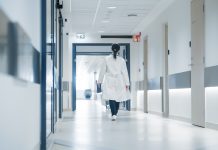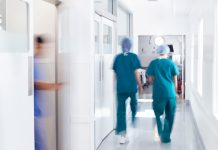Professor Alison Murray, Director of the Aberdeen Biomedical Imaging Centre, University of Aberdeen, explains how medical imaging has transformed healthcare over the years
Modern imaging is an essential part of healthcare and has come a long way since the discovery of X-rays in 1895 by Wilhelm Roentgen. Developments by researchers – many of them physicists and engineers in the UK – have resulted in imaging capabilities that we now take for granted, such as catheter angiography, ultrasound (US), computed tomography (CT), magnetic resonance imaging (MRI) and molecular imaging modalities in Nuclear Medicine and Positron Emission Tomography (PET). Imaging experts and equipment now form an essential component of all hospitals. Clinical radiology departments provide imaging for patients from emergency to routine out-patients, from conception to death. Imaging biomarkers of disease and response to treatment are highly effective in clinical trials of novel drugs and allow a significant reduction in numbers studied. Clinical imaging also extends to national screening programmes, such as the use of X-ray mammography for breast cancer screening.
For much of the 20th century plain X-rays and modification of this technique by the introduction of contrast, such as barium or iodinated contrast materials for gastrointestinal studies or myelography, were the mainstay of radiological practice. In 1953 the Swedish radiologist Seldinger introduced safe catheter arteriography 1 which has revolutionised interventional radiology and cardiology, allowing placement of arterial stents and occlusion of cerebral aneurysms.
In 1958 the Scottish obstetrician and gynaecologist Ian Donald developed ultrasound, using sound waves to image the fetus during pregnancy, 2 and laying the foundations for modern antenatal care and the use of abdominal US for characterising abdominal masses.
The development of computed axial tomography (or CAT scanning) by Sir Godfrey Hounsfield in 1973 3, supported by EMI funding as a result of the success of the Beatles, was a major advance that allowed us, for the first time, to see inside the head. Soon CT scanners were available in all major hospitals – completely revolutionising the lives of neurosurgeons (for whose benefit the images were displayed as though looked down on from above), radiologists and most importantly patients – who were now spared the barbarism of air-encephalography. Although limited to axial imaging for around 20 years, CT became and remains the mainstay of stroke treatment planning, cancer diagnosis and staging, trauma investigation and much more. CT took another leap forward with the development of slip ring technology in Erlangen (Siemens AG) in 1990, which allowed acquisition of a helical volume of data that could be reconstructed in any plane 4 – paving the way for CT angiography and 3D reconstructions. Methods that are now routinely used for pre-operative planning and follow-up.
Nuclear magnetic resonance (as MRI was first known) had been used for scientific analyses for some time but simultaneous ground-breaking research in brain imaging in Nottingham 5 and body imaging in Aberdeen 6 resulted in the first brain and body images of patients that would truly revolutionise medical imaging. Early work led to the development of gradient coils to allow slice selection and faster “spin-warp” imaging sequences (it was no secret that many early MRI physicists were “Trekkies”) 7. Today patients benefit from faster, quieter, higher (both temporal and spatial) resolution images acquired at progressively higher field strength. These allow, not only beautiful anatomical depiction but functional quantitation of perfusion, neuronal activation, structural integrity, spectroscopy and MR angiography, and provide an exquisite structural and functional depiction of disease and its consequences, without ionising radiation. MRI has protean clinical applications and, importantly avoids radiation in imaging children and in second and third trimesters of pregnancy.
Nuclear medicine imaging using radioisotopes, such as radioiodine, has been available since the 1940s. However, the use of 99m Tc, with its half-life of 6.5 hours, made labelling of many more useful molecules possible allowing, for example, isotope bone scintigraphy – used for staging and monitoring response to the treatment of breast, prostate and other cancer patients. PET scanners use completely different hardware that relies on coincidence detection of the simultaneously emitted photons following the annihilation of a positron with an electron. PET is the most sensitive molecular imaging technique that, following the production of hybrid PET-CT scanners, has revolutionised diagnosis and staging of many cancer patients and has been shown to be cost-effective 4,8.
New methods of imaging continue to be developed. Fast-field cycling MRI, by varying the strength of the magnetic field during the scan, allows extraction of new tissue information 9 that has the promise to provide better information about breast cancer and new information in dementia-related neurodegenerative diseases. Micro-US takes the diagnostic and therapeutic potential of US and miniaturises this to make it available at the end of a biopsy needle 10.
Radiological images are all stored, transferred and reported from picture archiving and communication systems (PACS). In Scotland we are fortunate to have a single system, allowing images acquired on a patient in Inverness to be seen by an expert in Edinburgh, before a decision is made to transfer the patient. PACS now constitutes a vast database of clinically relevant images and using best practice for anonymisation and safe data linkage developed with the Farr Institute, researchers are developing methods to exploit these data to answer clinically important questions relevant to the NHS. The combination of imaging data with genomic and life-course data in future will be extremely powerful and provides new opportunities and challenges for healthcare.
1 Seldinger SI. Catheter replacement of the needle in percutaneous arteriography; a new technique. Acta Radiol 1953 May;39(5):368-376.
2 Donald I, Macvivar J, Brown Tg. Investigation of abdominal masses by pulsed ultrasound. Lancet 1958 Jun 7;1(7032):1188-1195.
3 Hounsfield GN. Computerised transverse axial scanning (tomography). 1. Description of system. Br J Radiol 1973 Dec;46(552):1016-1022.
4 Rigauts H, Marchal G, Baert AL, Hupke R. Initial experience with volume CT scanning. J Comput Assist Tomogr 1990 Jul-Aug;14(4):675-682.
5 Holland GN, Moore WS, Hawkes RC. Nuclear magnetic resonance tomography of the brain. J Comput Assist Tomogr 1980 Feb;4(1):1-3.
6 Mallard J, Hutchison JM, Edelstein W, Ling R, Foster M. Imaging by nuclear magnetic resonance and its biomedical implications. J Biomed Eng 1979 Jul;1(3):153-160.
7 Edelstein WA, Hutchison JM, Johnson G, Redpath T. Spin warp NMR imaging and applications to human whole-body imaging. Phys Med Biol 1980 Jul;25(4):751-756.
8 Bradbury I, Facey K, Laking G, Sharp P. Investing in new technology: the PET experience. Br J Cancer 2003 Jul 21;89(2):224-227.
9 Lurie DJ, Aime S, Baroni NA, Booth NA, Broche LM, Choi C, et al. Fast field-cycling magnetic resonance imaging. C R Physique 2010;11:136-148.
10 Design, manufacturing and packaging of high frequency micro ultrasonic transducers for medical applications. 13th Electronics Packaging Technology Conference; 2011.
Professor Alison Murray
Director and Roland Sutton Chair of Radiology
Aberdeen Biomedical Imaging Centre – University of Aberdeen
Tel: +44 (0)1224 438362
a.d.murray@abdn.ac.uk










